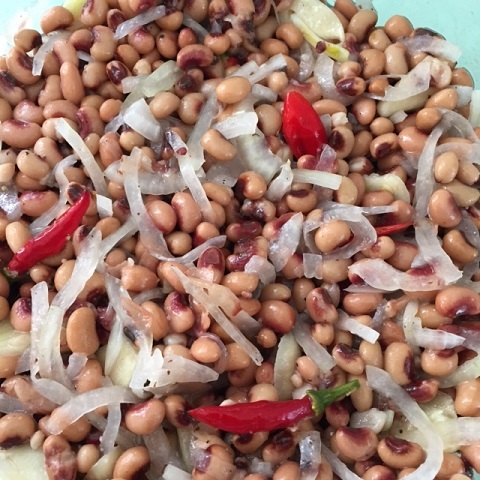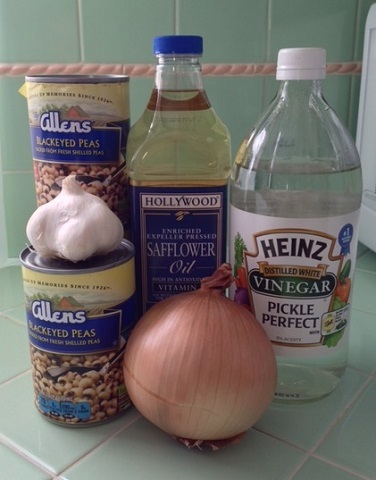Speak of the foods of the Deep South, and you conjure up familiar images of fried chicken and slow-cooked greens, easy living and white-columned homes, sweet potato pie and brown-sugar-crusted hams studded with cloves.
But of course, the reality of the foods of The South is considerably more complex and wide-ranging, with every region sporting its own culinary traditions, influenced by contributions from multiple countries and cultures. And many of them are far more healthy and well-balanced than common perceptions would lead one to assume.
It was the Native Americans who introduced the European settlers to corn, and thus we have cornbread, hominy, grits, and hush puppies. The Spanish introduced pigs to the New World, with their favorite resulting product - ham. The French imported a whole array of spicing and preparation notions that we know as Creole cuisine; and it was the Scots who liked to fry their chicken, unlike the boiled bird of British choice.
Perhaps the biggest contributors to the now-classic elements of Southern eatin' were the African slaves who worked the plantations after being torn from their homelands. They kept alive the repertoire they remembered as best they could, given the constrictions of their environment and servitude. Black-eyed peas, collard greens, and okra all originated in Africa; even the stereotypical watermelon had its origins there.
Interestingly, it was the straightened circumstances of the slaves that led to the healthy basis of "soul food". Vegetables and beans were the inexpensive and easily obtained staples that formed the bedrock of their meals, with the addition of only small amounts of meat that was used more for flavoring than as a main ingredient. Think hopping john, and slow-cooked greens with ham hocks, and gumbo (whose name was derived from quingombo, the West African word for okra).
So yes, it was exactly what modern nutritionists advise for a proper diet - generous amounts of vegetables and fruits, complex carbs like beans and corn, and small portions of meat and fish. Southern food is simple, direct, and seasonal - three excellent attributes for cooking at home.
And yes there are some, shall we say, indulgent aspects of Southern cooking, especially when it comes to desserts - pecan pie with whipped cream anyone? And it would be hard to make a case for the nutritional benefits of biscuits and gravy, or chicken-fried steak.
But there are endless options for sensible yet delicious dishes, from the seafood-inflected casseroles of Creole lineage to the seasonal vegetable-strewn offerings of soul food. It's time to explore the lighter side of Southern cooking; it was there all along, just waiting to be acknowledged and enjoyed.
Oh, and in case you don't already have one -- a good cast-iron pan is essential to Southern cooking. So get one, season it right, and use it regularly!
Autumn Hominy Casserole
Try this Southern -inflected side dish at your Thanksgiving feast...
1/4 cup corn oil
1 large brown onion, sliced thick & quartered
2 large red bell peppers, cored & cut into 1-inch pieces
2 medium yellow squash, cut into 1-inch chunks
1 large eggplant, cut into 1-inch chunks
3 cloves garlic, peeled & minced
1 tablespoon Cajun Creole spice mix
2 cans Ro-tel tomatoes
2 15-oz. cans white hominy
1/2 cup Panko breadcrumbs
1/3 cup shredded mild cheddar
Preheat oven to 375. Coat the inside of a 9x13 glass baking dish with cooking spray.
In a large saucepan (or a cast-iron pan), heat oil over medium heat; add onion and bell pepper, cook until barely softened. Add squash, eggplant, garlic, & Cajun spice, cook until softened, about 5-7 minutes. Stir in tomatoes & hominy.
Transfer to baking dish, sprinkle top with bread crumbs & cheese. Bake for about 25-30 minutes, until cooked through and browned on top.
Serves 8.
Black-Eyed Pea Salad
You don't have to wait for the New Year to enjoy this traditional harbinger of good luck... Make it several days in advance for optimal results!
4 15-ounce cans black-eyed peas, rinsed & drained
1 Vidalia onion, quartered & sliced very thin
5 cloves garlic, peeled & sliced
3 Thai bird chiles (or more if you like it hot!)
1/3 cup white vinegar
1/2 cup vegetable oil (I use safflower)
Lots of salt & fresh-ground pepper
Combine all ingredients and mix well. Place in tightly-sealed container and refrigerate for several days to allow flavors to blend. Remove garlic before serving.
Serves 8-10.
[A version of this post appears in my "Kitchen Matters" column in Better Nutrition Magazine.]

